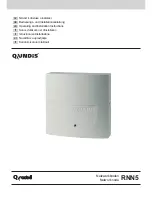
vrf (IP SLA)
To enable the monitoring of a Virtual Private Network (VPN) in an ICMP echo, ICMP path-echo, ICMP
path-jitter, UDP echo, or UDP jitter operation, use the
vrf
command in the appropriate configuration mode.
To disable VPN monitoring, use the
no
form of this command.
vrf vrf-name
no vrf
Syntax Description
Name of the VPN. Maximum length is 32 alphanumeric characters.
vrf-name
Command Default
VPN monitoring is not configured for an IP SLA operation.
Command Modes
IP SLA ICMP echo configuration
IP SLA ICMP path-echo configuration
IP SLA ICMP path-jitter configuration
IP SLA UDP echo configuration
IP SLA UDP jitter configuration
IP SLA MPLS LSP ping configuration
IP SLA MPLS LSP trace configuration
Command History
Modification
Release
This command was introduced.
Release 3.4.0
Usage Guidelines
Use the
vrf
command to configure a non-default VPN routing and forwarding (VRF) table for an IP SLA
operation. A VPN is commonly identified using the name of a VRF table. If you use the
vrf
command in the
configuration of an IP SLA operation, the
vrf-name
value is used to identify the VPN for the particular
operation.
The default VRF table is used if no value is specified with the
vrf
command. If you enter a VPN name for an
unconfigured VRF, the IP SLA operation fails and the following information is displayed in the results for
the
show ipsla statistics, on page 235
command:
Latest operation return code
: VrfNameError
The
vrf
command is supported only to configure the following IP SLA operations:
•
IP SLA ICMP echo
•
IP SLA ICMP path-echo
Cisco IOS XR System Monitoring Command Reference for the Cisco XR 12000 Series Router, Release 4.1
OL-24735-01
295
IP Service Level Agreement Commands
vrf (IP SLA)
















































